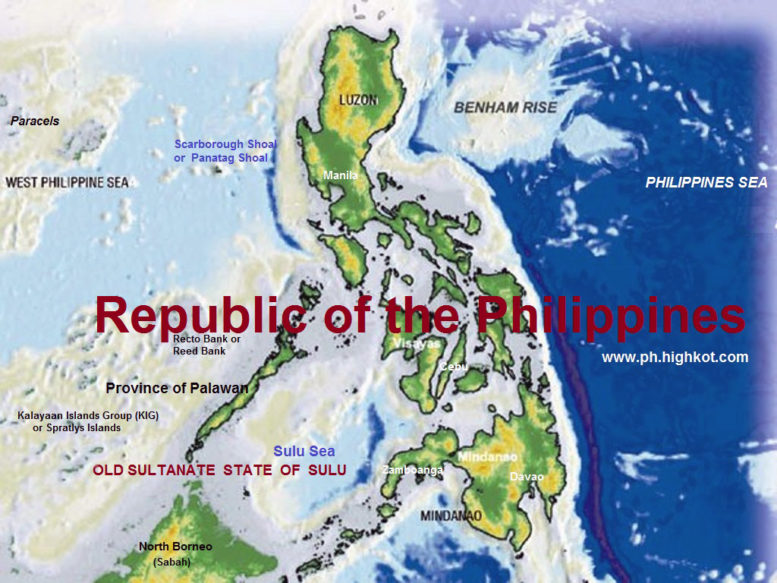The presentation of some groups working to promote awareness of the archipelagic and maritime nature of the nation is one of the highlights of the recent Maritime Forum held last month at the National Defense College of the Philippines. This could have been triggered by the developing situations in the South China Sea and Benham Rise in the Philippine Sea.
Security analysts in the past have always regarded the Spratlys in the South China Sea as one of the world’s conflict “flash points” long before China formulated its latest naval strategy of establishing maritime defense perimeter way beyond its territorial boundaries. It maybe recalled that China’s modernization starting 1978 needed tremendous energy requirements, which has led China to become an oil importer since 1995. With rising population and increased production outputs to propel its economy, China had to focus on exploiting its sea areas for energy, mineral and fishery resources. It gradually developed a strong maritime force and converted three features in the Spratlys into naval bases to do just that. Many nations have been alarmed over China’s posturing that could hamper freedom of navigation, degrade the marine environment, and disturb maritime commerce.
At the northeastern part of the Philippines lies a less known sea frontier, Benham Rise, lately renamed as Philippine Rise, and believed to contain considerable ocean resources for the present and future generations. The United Nations’ award of extended continental shelf in that region five years ago added additional seabed area for the Philippines to exercise sovereign rights but has gone unnoticed until the government reported few months ago the sighting of Chinese vessels on extended stay. Incidentally the Philippine Rise is within China’s controversial “nine-dash line” maritime claim.
China’s assertive stance in South China Sea has generated negative reactions from several countries. The previous Philippine government unilaterally took an aggressive position but received no encouragement from its neighbors. Chinese response adversely affected the country’s bilateral trade. The new administration, however, adopted a more pragmatic view to set aside territorial issues for the meantime in favor of economic opportunities and conflict avoidance.
The government’s new approach towards Philippines-China relations must be taken positively at this point in time. Already, the Chinese have shown their willingness to assist in the social (drug rehabilitation and aid to conflict area), economic (infrastructure soft loans and bilateral trade), and military affairs (weapons acquisition). With these developments, the incumbent President clearly demonstrated his resolve to adopt an independent foreign policy as enunciated by the Constitution, and avoid the risk of military confrontation. This period of friendly relations presents an opportune time for the country to reflect and put some time and efforts to awaken the patriotic spirit of the people and instill the “maritime nation” mind set.
The geographical position and physical configuration of the country make it a maritime nation. It is at the crossroad of the western Pacific Ocean where half of the global tonnage carrying a third of monetary value of world commerce passes through. It has plentiful natural resources and uses the sea as principal means of communication and livelihood. The country is a top provider of merchant seamen in the world and has the 12th largest population. It has extensive territory with a water area three times the land area.
But to transform a maritime nation into a sea power it has to satisfy six conditions identified by American naval strategist Alfred Thayer Mahan. These are: (1) advantageous geographical position; (2) serviceable coastlines, abundant natural resources and a favorable climate; (3) extensive territory; (4) a population large enough to defend its territory; (5) a society with an aptitude for the sea and commercial enterprise; and (6) a government with the influence to dominate the sea. The first five conditions are easy to discern but the sixth, and the most important, is difficult to ascertain.
The 1994 National Marine Policy promulgated during President Fidel V. Ramos administration is the first comprehensive initiative to make the country a maritime power. It mandates to shift the focus of development from land-based to marine-based. This policy conditions the government to “dominate the sea.” As John F. Kennedy once said: “Control of the sea means security. Control of the seas means peace.” Sadly, after 23 years not much has been achieved. For example, despite being the 4th in the world in merchant fleet production in terms of tonnage, not a single medium to large combatant vessel has been built by local shipyards since the issuance of that policy and that the top shipbuilders, tonnage-wise, are foreign-owned. The sea going forces mandated to protect the merchant fleet and maritime areas continue to encounter difficulties in convincing the budget decision makers to fund their modernization programs. Failing to implement those programs has adverse impact on operational force planning and readiness involving deployment, sustenance, maintenance and training.
With the recent formation of some advocacy groups to attract people to recognize and support the country’s maritime character and the government’s new foreign policy, there is great hope that Philippines may eventually emerge as a true maritime nation that is capable of becoming a sea power… a sea power that is committed to peace, progress, and stability in the Asia-Pacific region.
